-
 Bitcoin
Bitcoin $96,973.9779
3.07% -
 Ethereum
Ethereum $1,857.8764
4.87% -
 Tether USDt
Tether USDt $1.0005
0.04% -
 XRP
XRP $2.2386
3.53% -
 BNB
BNB $602.5033
0.90% -
 Solana
Solana $152.0649
6.14% -
 USDC
USDC $1.0001
0.00% -
 Dogecoin
Dogecoin $0.1823
6.91% -
 Cardano
Cardano $0.7074
4.47% -
 TRON
TRON $0.2468
0.58% -
 Sui
Sui $3.6947
8.65% -
 Chainlink
Chainlink $14.9192
5.71% -
 Avalanche
Avalanche $21.4575
2.94% -
 Stellar
Stellar $0.2776
2.94% -
 UNUS SED LEO
UNUS SED LEO $8.9563
-1.26% -
 Shiba Inu
Shiba Inu $0.0...01370
4.10% -
 Hedera
Hedera $0.1896
5.04% -
 Toncoin
Toncoin $3.1929
0.81% -
 Bitcoin Cash
Bitcoin Cash $366.0350
0.67% -
 Litecoin
Litecoin $88.8139
6.90% -
 Hyperliquid
Hyperliquid $20.1153
7.94% -
 Polkadot
Polkadot $4.1856
2.90% -
 Dai
Dai $1.0000
-0.01% -
 Bitget Token
Bitget Token $4.3966
1.71% -
 Monero
Monero $276.7705
1.03% -
 Ethena USDe
Ethena USDe $1.0005
0.07% -
 Pi
Pi $0.6091
5.99% -
 Pepe
Pepe $0.0...08875
1.15% -
 Aptos
Aptos $5.5388
4.31% -
 Uniswap
Uniswap $5.4035
3.35%
Blockchain wallet address private key
A blockchain wallet address is a unique identifier to receive funds, while a private key is the secret that grants access and control over the funds associated with that address.
Dec 23, 2024 at 02:09 pm
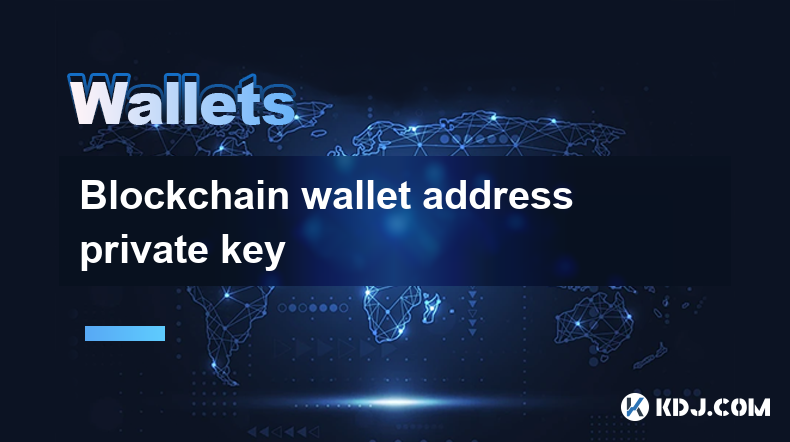
Key Points:
- What is a Blockchain Wallet Address?
- What is a Private Key?
- How to Generate a Private Key
- How to Store a Private Key
- How to Use a Private Key
- How to Recover a Lost Private Key
- What Happens if You Lose Your Private Key?
- How to Keep Your Private Key Safe
Article:
Understanding Blockchain Wallet Address and Private Key
Cryptocurrencies, such as Bitcoin and Ethereum, are stored on blockchains, distributed ledgers that record transactions in a secure and transparent manner. To access and manage these cryptocurrencies, users interact with their funds through digital wallets. These wallets are assigned unique blockchain wallet addresses, which serve as public identifiers for receiving transactions. However, to control and access the funds stored at these addresses, users require a private key.
What is a Blockchain Wallet Address?
A blockchain wallet address is a unique string of characters that represents a specific location on the blockchain where cryptocurrencies can be stored and received. It is generated by a cryptographic hash function using the public key derived from the wallet's private key. Wallet addresses are typically between 26 and 34 characters long and start with a specific prefix that indicates the network the wallet belongs to, such as "0x" for Ethereum or "1" for Bitcoin.
What is a Private Key?
A private key is a secret number or a long string of random characters that allows the owner to access and control the funds associated with their blockchain wallet address. It is essential for signing transactions, which authorize the transfer of cryptocurrencies from one address to another. Private keys should never be shared or revealed to anyone else, as they provide complete control over the funds they secure.
How to Generate a Private Key
Private keys are typically generated randomly using software or hardware devices designed specifically for cryptocurrency storage. Hardware wallets, such as Ledger Nano and Trezor, provide a high level of security by generating and storing private keys offline, away from potential online vulnerabilities. There are also various software wallets that allow users to generate private keys within their secure environments.
How to Store a Private Key
Private keys should be stored securely, both physically and digitally. It is important to note that there is no central authority that can retrieve a lost private key, so users are solely responsible for maintaining the security of their own keys.
- Write it down. One of the most straightforward methods is to physically record the private key on a piece of paper or metal. It should be kept in a safe place, away from unauthorized access.
- Use a hardware wallet. Hardware wallets, such as Ledger Nano and Trezor, provide cold storage for private keys, keeping them offline and inaccessible to potential hackers.
- Use a password manager. Password vaults, such as LastPass and KeePass, allow users to securely store private keys and other sensitive information.
- Store it in your head. Advanced cryptocurrency users may choose to memorize their private keys, which offers maximum security if done correctly. However, it is crucial to ensure that the key is memorized accurately and retained without error.
How to Use a Private Key
Private keys are used to sign transactions on the blockchain. When you initiate a transaction from your cryptocurrency wallet, the wallet software will generate a transaction template that includes the recipient's address, the amount of cryptocurrency you want to send, and a fee.
To authorize and complete the transaction, you will need to sign the transaction template using your private key. This process proves that you own the funds being transferred and authorizes the blockchain to update its ledger accordingly.
How to Recover a Lost Private Key
If you lose your private key, you will no longer be able to access the funds associated with the corresponding wallet address. There is no central authority or recovery service that can assist with lost private keys.
- Use a mnemonic seed phrase. When creating a software wallet, you will often be provided with a mnemonic seed phrase. This is a list of words that can be used to recover your private key in case it is lost. It is crucial to store the mnemonic phrase securely, separate from your private key.
- Contact the wallet provider. Some software wallets offer recovery options through their customer support channels. They may ask you to provide information to verify your identity and reset your private key.
- Use a third-party service. There are third-party services that claim to be able to recover lost private keys. However, it is important to proceed with caution, as there is a risk of scams and security breaches when dealing with such services.
What Happens if You Lose Your Private Key?
If you lose your private key and do not have a way to recover it, you will effectively lose access to the funds associated with the corresponding wallet address. The funds will remain on the blockchain, but they will be inaccessible to you.
How to Keep Your Private Key Safe
- Never share your private key with anyone.
- Store your private key securely, both digitally and physically.
- Consider using a password manager or hardware wallet for increased security.
- Back up your private key in multiple locations for redundancy.
- Avoid clicking on suspicious links or downloading potentially malicious software.
FAQs
Q: Can I recover my private key if I lose it?
A: It may be possible to recover your private key using a mnemonic seed phrase, through the wallet provider, or through third-party services. However, it is not guaranteed, and there is a risk of scams and security breaches.
Q: What happens if someone else gets access to my private key?
A: If someone else gains access to your private key, they will have complete control over the funds associated with the corresponding wallet address. They can transfer, spend, or lose your funds without your permission.
Q: Can I change my private key?
A: Yes, it is possible to change your private key by creating a new wallet address and transferring your funds to that address. However, it is important to note that some recovery methods, such as using a mnemonic seed phrase, may be tied to your original private key.
Disclaimer:info@kdj.com
The information provided is not trading advice. kdj.com does not assume any responsibility for any investments made based on the information provided in this article. Cryptocurrencies are highly volatile and it is highly recommended that you invest with caution after thorough research!
If you believe that the content used on this website infringes your copyright, please contact us immediately (info@kdj.com) and we will delete it promptly.
- The crypto market is rising, and several altcoins are positioning themselves
- 2025-05-02 01:25:12
- Dinari, a tokenisation startup that allows non-U.S. investors to buy shares of U.S. companies has raised $12.7 million
- 2025-05-02 01:25:12
- DOGE, the most well-known meme coin, has been in the spotlight for over a decade with its unpredictable price swings
- 2025-05-02 01:20:12
- Western Distributing Transportation Corporation 18-wheeler rolls over, spilling cash
- 2025-05-02 01:20:12
- Troller Cat (TCAT) Whitelist Closes Soon, Promising 10,000% Returns
- 2025-05-02 01:15:12
- Final Shot at Jaw-Dropping Payoffs: Arctic Pablo's $0.10 Milestone Sparks Explosive Returns as Pepe and WHY Coin Hold Firm
- 2025-05-02 01:15:12
Related knowledge
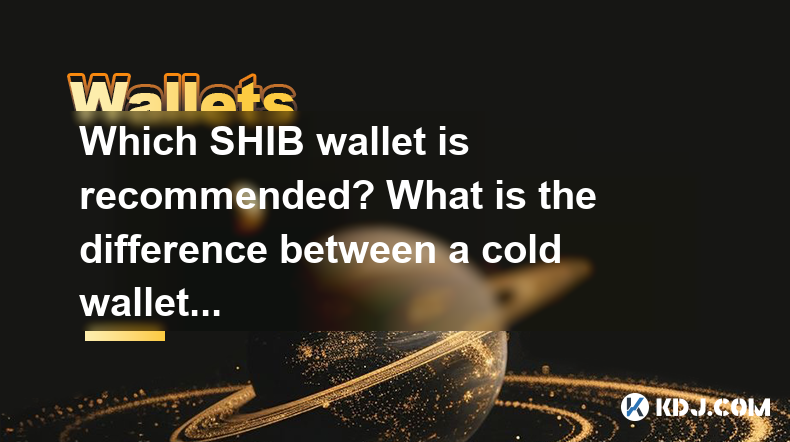
Which SHIB wallet is recommended? What is the difference between a cold wallet and a hot wallet?
Apr 29,2025 at 07:42pm
When it comes to storing your Shiba Inu (SHIB) tokens, choosing the right wallet is crucial for the security and management of your digital assets. In the cryptocurrency world, wallets are categorized into two main types: cold wallets and hot wallets. This article will explore the recommended SHIB wallets and delve into the differences between cold and ...

How to store AVAX safely after purchase? Which is better, cold wallet or hot wallet?
Apr 28,2025 at 09:28pm
When you purchase AVAX, the native cryptocurrency of the Avalanche network, ensuring its safe storage is crucial. The choice between a cold wallet and a hot wallet depends on your specific needs, such as security, convenience, and frequency of transactions. In this article, we will explore both options in detail, helping you make an informed decision on...

What to do if LINK wallet transfer fails? FAQ
Apr 29,2025 at 06:08pm
If you encounter a LINK wallet transfer failure, it can be a frustrating experience. However, there are several steps you can take to diagnose and resolve the issue. LINK, or Chainlink, is a decentralized oracle network that provides real-world data to smart contracts on the blockchain. Ensuring that your LINK transfers go smoothly is crucial for partic...
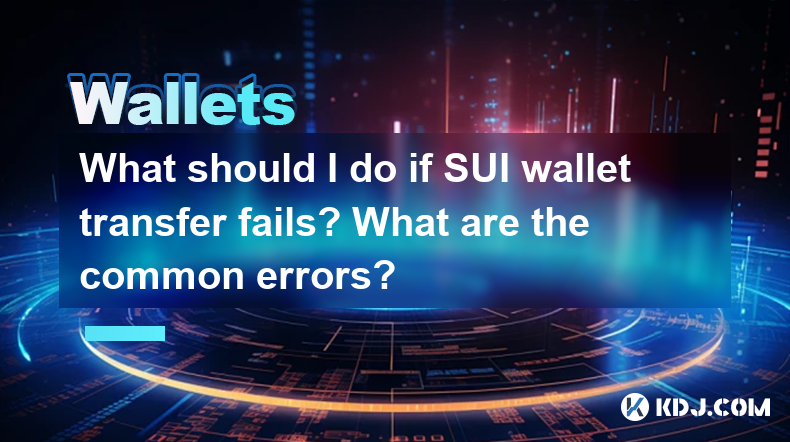
What should I do if SUI wallet transfer fails? What are the common errors?
Apr 29,2025 at 01:14am
If you are experiencing issues with SUI wallet transfers, it can be frustrating and confusing. This article will guide you through the common errors that may occur during a SUI wallet transfer and provide detailed steps on how to troubleshoot and resolve these issues. Understanding Common SUI Wallet Transfer ErrorsSUI wallet transfer failures can stem f...
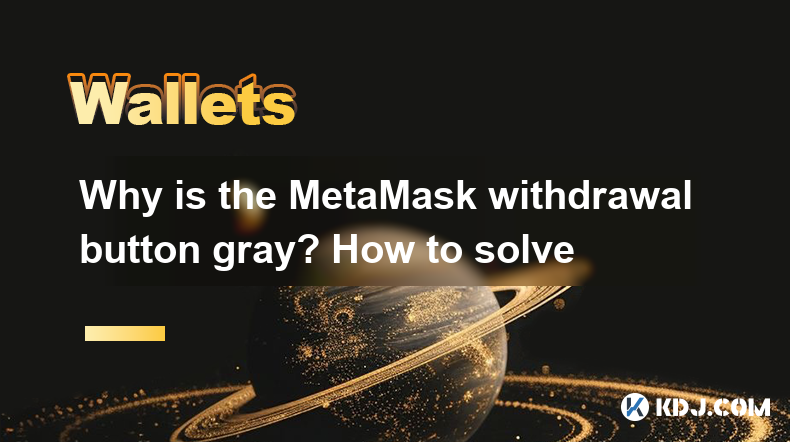
Why is the MetaMask withdrawal button gray? How to solve
Apr 28,2025 at 10:07am
When users encounter a grayed-out withdrawal button on MetaMask, it can be a source of frustration and confusion. Understanding why this happens and how to solve it is crucial for smooth transactions. The grayed-out withdrawal button typically indicates that certain conditions are not met, preventing the user from proceeding with a withdrawal. This arti...
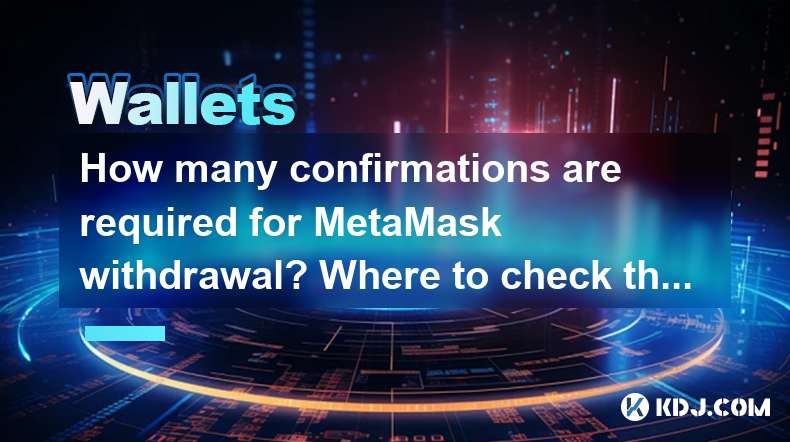
How many confirmations are required for MetaMask withdrawal? Where to check the progress
Apr 28,2025 at 05:49am
When using MetaMask to withdraw cryptocurrency, understanding the number of confirmations required and how to check the progress of your transactions is crucial for a smooth experience. Confirmations refer to the number of blocks added to the blockchain after the block containing your transaction, which helps to verify and secure the transaction. This a...

Which SHIB wallet is recommended? What is the difference between a cold wallet and a hot wallet?
Apr 29,2025 at 07:42pm
When it comes to storing your Shiba Inu (SHIB) tokens, choosing the right wallet is crucial for the security and management of your digital assets. In the cryptocurrency world, wallets are categorized into two main types: cold wallets and hot wallets. This article will explore the recommended SHIB wallets and delve into the differences between cold and ...

How to store AVAX safely after purchase? Which is better, cold wallet or hot wallet?
Apr 28,2025 at 09:28pm
When you purchase AVAX, the native cryptocurrency of the Avalanche network, ensuring its safe storage is crucial. The choice between a cold wallet and a hot wallet depends on your specific needs, such as security, convenience, and frequency of transactions. In this article, we will explore both options in detail, helping you make an informed decision on...

What to do if LINK wallet transfer fails? FAQ
Apr 29,2025 at 06:08pm
If you encounter a LINK wallet transfer failure, it can be a frustrating experience. However, there are several steps you can take to diagnose and resolve the issue. LINK, or Chainlink, is a decentralized oracle network that provides real-world data to smart contracts on the blockchain. Ensuring that your LINK transfers go smoothly is crucial for partic...

What should I do if SUI wallet transfer fails? What are the common errors?
Apr 29,2025 at 01:14am
If you are experiencing issues with SUI wallet transfers, it can be frustrating and confusing. This article will guide you through the common errors that may occur during a SUI wallet transfer and provide detailed steps on how to troubleshoot and resolve these issues. Understanding Common SUI Wallet Transfer ErrorsSUI wallet transfer failures can stem f...

Why is the MetaMask withdrawal button gray? How to solve
Apr 28,2025 at 10:07am
When users encounter a grayed-out withdrawal button on MetaMask, it can be a source of frustration and confusion. Understanding why this happens and how to solve it is crucial for smooth transactions. The grayed-out withdrawal button typically indicates that certain conditions are not met, preventing the user from proceeding with a withdrawal. This arti...

How many confirmations are required for MetaMask withdrawal? Where to check the progress
Apr 28,2025 at 05:49am
When using MetaMask to withdraw cryptocurrency, understanding the number of confirmations required and how to check the progress of your transactions is crucial for a smooth experience. Confirmations refer to the number of blocks added to the blockchain after the block containing your transaction, which helps to verify and secure the transaction. This a...
See all articles





















![[Geometry Dash] VAST by AdrianArtistry (2nd update on first coin) [Geometry Dash] VAST by AdrianArtistry (2nd update on first coin)](/uploads/2025/05/01/cryptocurrencies-news/videos/geometry-dash-vast-adrianartistry-nd-update-coin/image-1.webp)































































